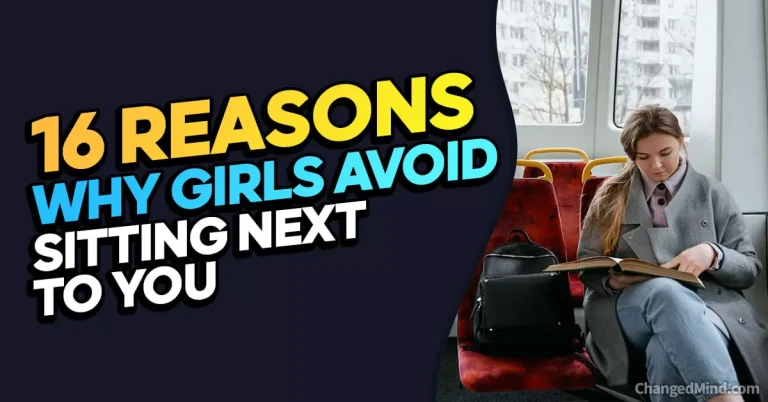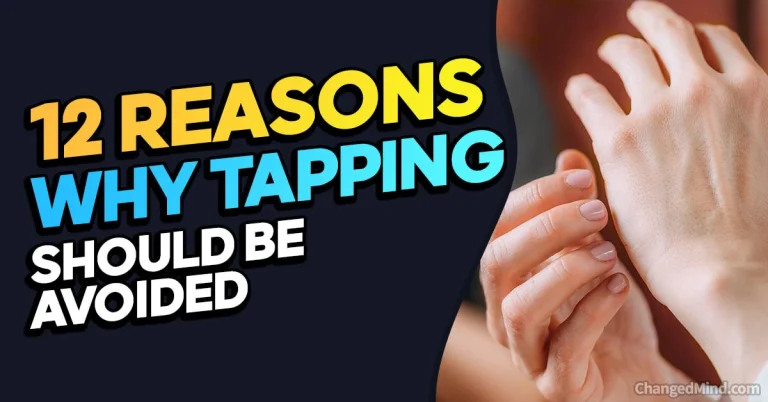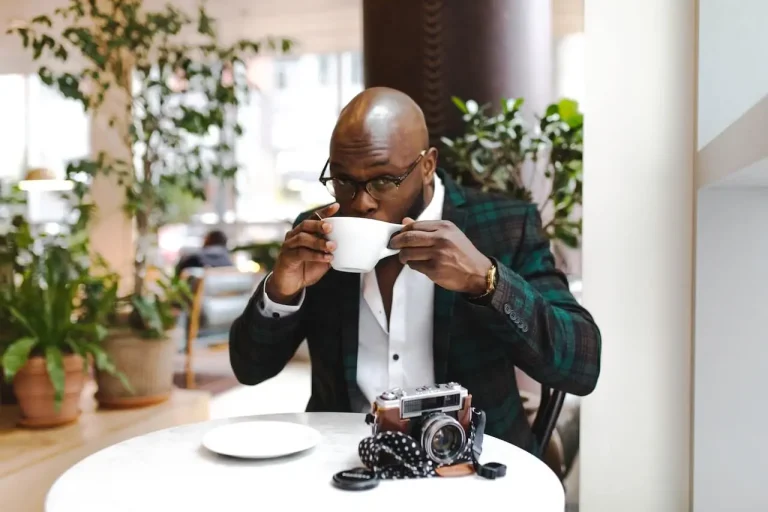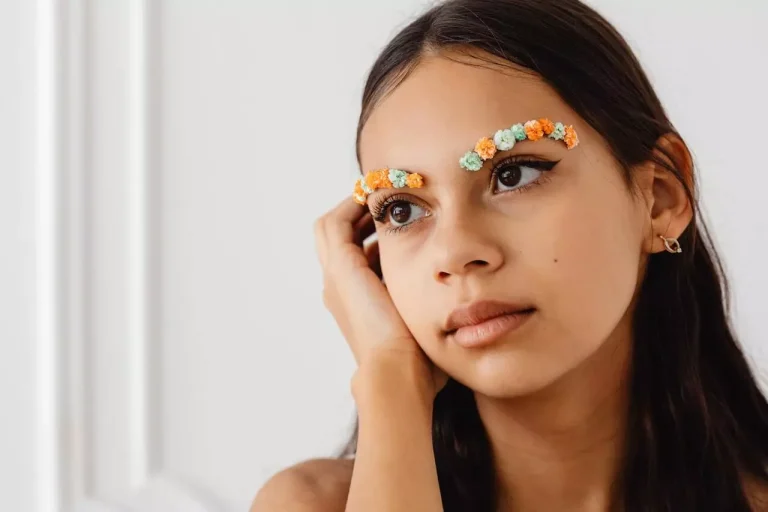Hands In Pockets typically indicates feelings of comfort, relaxation, or a desire to shield oneself from the environment.
Are you ready to uncover the secrets hidden within the simple act of putting your hands in your pockets? Welcome to the world of “Hands In Pockets Body Language.” In this blog post, we’ll dive deep into the subtle signals, unspoken messages, and concealed emotions that your pockets can reveal.
As an expert in non-verbal communication, I’ve spent years deciphering the intricate language of body movements. From casual encounters to important meetings, our hands have a lot to say, and they often do it without us even realizing it. So, let’s unravel the mysteries together.
Key Points We’ll Explore:
- The hidden meanings behind different pocket placements.
- How crossed arms and pocketed hands differ in conveying emotions.
- The impact of context on interpreting pocket gestures.
- Tips for using pockets to project confidence and control.
- The role of cultural differences in pocket body language.
Prepare to be amazed by the wealth of information your hands in pockets can convey. Whether you’re trying to read others or project the right image, understanding this subtle language will give you a valuable edge in various aspects of life. So, let’s roll up our sleeves (or should I say, put our hands in our pockets) and delve into this fascinating realm of non-verbal communication.
Introduction into Hands In Pockets Body Language
Hook: A Puzzling Encounter
Picture this: You’re at a social gathering, nursing your drink, when someone saunters up to you. They have an aura of confidence, or is it nonchalance? Their hands are nonchalantly shoved in their pockets as they begin to chat. You find yourself wondering, “What’s the deal with those hands in pockets?” Are they just relaxed or is this some clandestine signal? The intrigue is killing you!
The Unspoken Word: Body Language
Newsflash! According to body language experts, a whopping 55% of communication is through nonverbal cues, like body language. Yes, that’s right! Our bodies often speak louder than our words. You might think you’re the master of poker faces, but your body could be spilling all the beans. It’s essential to understand the unspoken dialect of body signals, especially in today’s world where every gesture can have a magnified meaning.
Pocketing The Secrets: Hands In Pockets Body Language
Alright, let’s get to the heart of the matter. When people put their hands in their pockets, it’s like they are taking a piece of nonverbal communication and tucking it away. But what does it mean? Well, “Hands In Pockets Body Language” is more than just a relaxed stance. It can be a symphony of comfort, nervousness, confidence, or even deceit. Heck, someone might just be trying to find loose change. But worry not, this guide is your Rosetta Stone to decoding these hidden signals.
Mission Statement: Operation Decode
So, my astute reader, our mission, should we choose to accept it, is to unveil the true meaning behind this nonchalant but intriguing “Hands In Pockets Body Language”. By the end of this enlightening journey, you will be a veritable Sherlock Holmes of body language analysis.
Whether you are navigating the murky waters of dating, trying to suss out a colleague, or just want to be more aware of the signals you’re sending, this article is your treasure map.
So, put on your explorer hat, because we are about to embark on a thrilling escapade into the world of body language interpretation! 🕵️♂️🗺️
History and Background
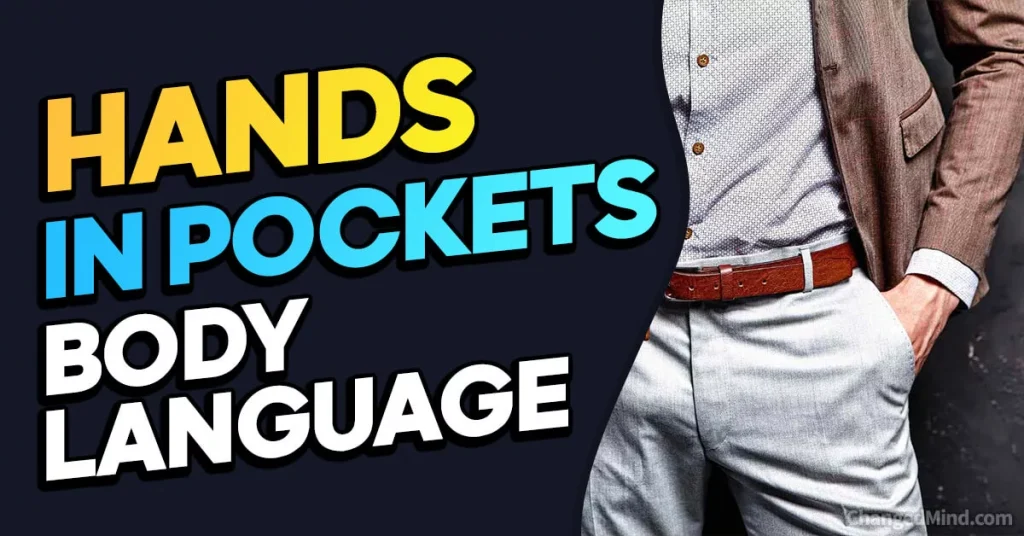
The Prestigious Palms: The Role of Hands in Communication Throughout History
Put your time-travel goggles on, my dear Watson, as we take a step back to understand how our trusty appendages have been the stars of the nonverbal communication show.
- Ancient Times: The ancient Romans and Greeks were big on hand gestures. Orators like Cicero and Demosthenes were probably the early maestros of the “Hands In Pockets Body Language”, had togas had pockets! In all seriousness, they used their hands extensively to accentuate their rhetoric. Some ancient statues even capture these expressive hand gestures, immortalizing them in stone.
- Middle Ages: Flash forward a few centuries to the Middle Ages. Knights in shining armor couldn’t exactly convey facial expressions through helmets, could they? Hence, hand gestures became the go-to mode of communication. A hand on the hilt meant “I challenge thee,” while hands tucked in the gambeson probably meant “No quarrel with thee, good sir!”
- The Renaissance: Ah, the age of art and enlightenment! Artists like Leonardo da Vinci recognized the expressive power of hands and used them ingeniously in paintings. Ever gazed upon the Mona Lisa and pondered the mystery of her hands? Yeah, Leo was onto something!
- Modern Era: The hand gesture lexicon exploded with diversity in modern times. Just think about the high-five, thumbs-up, and even the politician’s classic thumb-point. Hands speak volumes!
Pocket-ology 101: The Emergence of Pockets and Hands Cozying In Them
Hold onto your breeches! Yes, breeches. Let’s unravel how pockets became a part of clothing, and why hands made a beeline for them.
- Enter Pockets: Pockets weren’t always a thing. Once upon a sartorial time, people used pouches and bags to carry stuff. But around the 17th century, someone had the bright idea to add pockets to clothing. Suddenly, there were cozy nooks for your hands to hang out in!
- Covert Affairs: In the 19th century, the “Hands In Pockets” gesture started symbolizing a laid-back or casual demeanor. It was also an ideal hideout for shifty pickpockets and secret agents to conceal mysterious trinkets. (Psst! Perfect for hiding that love letter you never dared to send.)
- Psychological Comfort: Today, experts in body language psychology say that sliding hands into pockets can also be a form of self-comfort. Pockets serve as a refuge for nervous hands or a place to keep them when we don’t know what to do with them.
- The Cool Factor: Pop culture made “Hands In Pockets Body Language” synonymous with cool and aloof. Think James Dean, with his hands nonchalantly in his jacket pockets, smirking like he knows something you don’t.

In summary, pockets evolved from being a mere utility to becoming havens for our hands, which are themselves masters of nonverbal communication. The “Hands In Pockets Body Language” has a rich heritage and diverse implications.
Keep your eyes peeled and your hands ready, as we delve deeper into the fascinating world of body language signals, decoding one pocketed hand at a time! 🕺💼🤝
The Psychology of Hands In Pockets Body Language
The Wizardry of Hands: Conveying Emotions and Thoughts
Hold your palms up, my friends, for we are about to unveil the spellbinding power they hold! Throughout human history, hands have been like wands for wizards, casting spells of emotions and thoughts.
- Communication Magnifier: Our hands are amplifiers in the conversation. A simple “Hello!” can become an ecstatic greeting with a wave, or a somber one with a slight nod and hands tucked away.
- The Magic of Touch: In the realm of body language, touch is an incantation of its own. A warm handshake can convey trust, while a cold one might as well be saying “Avada Kedavra” to the rapport.
- A Tapestry of Expression: Hand gestures weave a rich tapestry that complements our spoken words. We point, we wave, we facepalm – our hands are like an artist’s brush painting the canvas of our conversations.

Inside the Pocket Dimension: Psychological Reasons for the Hands’ Hibernation
So why do our magical appendages sometimes retreat into the pocket dimension? Here’s the breakdown:
- Self-Comfort: Sometimes, our hands need a little R&R. According to body language experts, when we’re anxious, our hands seek the warm embrace of our pockets like a cozy blanket.
- Hiding Spot: Putting hands in pockets can also be akin to an ostrich sticking its head in the sand. “If my hands are hidden, maybe my discomfort will be too!” (Spoiler: It’s not that effective.)
- Swagger Meter: The cool cats out there often use the “Hands In Pockets” gesture to exude an air of laid-back swagger. It’s like a non-verbal “I got this.”
Pockets: The Nexus of Mood, Comfort, and Confidence
The humble pocket is like a crossroad where mood, comfort, and confidence come together for a tea party.
- Mood Indicators: Our hands in pockets can reflect our mood. Hands deep in pockets with slumped shoulders could mean we’re down in the dumps, while thumbs hanging out of pockets scream “I’m top dog here!”
- Comfort Haven: Our pockets are like personal havens. They give our hands a place to chill, and that can be comforting. It’s like telling your hands, “Take five!”
- Confidence (or Lack Thereof): Sometimes the “Hands In Pockets Body Language” is used to project confidence, but be cautious! Overdo it and it might come across as overcompensating.
Ah, the mystical world of “Hands In Pockets Body Language” – it’s a cornucopia of psychological cues. A pocket isn’t just a piece of fabric; it’s a stage where the drama of nonverbal communication unfolds. So, next time you see someone with their hands in their pockets, or you find your own hands snuggled up in there, remember: You’re participating in an ancient and complex dance of psychology and body language signals.

Take a bow, maestro! 🎩👐🎭
Different Contexts and Meanings
Listen up, pocketeers! The meaning behind the mystical Hands In Pockets Body Language isn’t one-size-fits-all. Like a chameleon, it adapts based on the environment.
Let’s dive into the magic pocket and pull out what this gesture means in different scenarios.

Casual Social Settings
1. The ‘Chillax’ Mode: Comfort and Relaxation
Picture this: You’re at a BBQ party, your friend’s hands are in his pockets, and he’s got that relaxed smile. This is the Casual Comfort Pose. It’s the body’s way of saying, “I’m feeling good. My hands are just chilling in my pockets, perhaps seeking the last piece of gum.”
This body language is often accompanied by a relaxed posture and indicates that a person is at ease in a social setting.
2. The ‘I’d Rather Be Home’ Stance: Disinterest or Detachment
But wait! What if your friend’s posture is more slouched, and he’s not really engaging? Ah, this is the classic “I’d rather be binge-watching my favorite show” stance. When hands in pockets are coupled with limited eye contact and minimal verbal engagement, it signals disinterest or detachment.
Professional Environment

1. The Shaky Ground: Lack of Confidence or Nervousness
In the jungle of the professional world, the Hands In Pockets Body Language can be as shaky as a caffeinated squirrel. If someone often has their hands in their pockets during a presentation or a meeting, it might be their security blanket, protecting them from the perceived icy glares of their colleagues.
This can indicate a lack of confidence or nervousness.
2. The Fort Knox Stance: Defensiveness or Hiding Something
Now, if your colleague has their hands in their pockets and is giving you the evil eye or crossing their arms, beware! They might as well be behind a fortress. This defensive posture can mean they’re not open to feedback or, in some cases, might be withholding information.
Sherlock Holmes would have his magnifying glass out for this one!
Romantic and Dating Scenarios

1. The Smooth Operator: Attraction or Cool Demeanor
Now, let’s get romantic! When on a date, if they have one hand in the pocket and a confident posture, you might be dealing with a Smooth Operator. This is a way to project a cool demeanor. It’s like saying, “I’m James Bond cool, and my hands in my pocket are just part of the charm.”
2. The Iron Gate: Closed Off or Guarded Emotions
Alternatively, if both hands are deep in pockets and there’s minimal eye contact, uh-oh, we have an Iron Gate scenario. This can signal closed-off or guarded emotions. The pockets become a refuge, a place to hide not just hands, but also vulnerabilities.
So dear readers, next time you encounter the enigmatic Hands In Pockets Body Language, don your detective hat. Context is key, and now you’ve got the master key to unlock the meanings behind this captivating nonverbal cue! 🕵️🔑🤲
Cultural Differences

Hold on to your hats, globe-trotters! When it comes to Hands In Pockets Body Language, cultures across the world play a game of interpretative Twister. Understanding these cultural nuances is like unlocking a secret level in the Game of Gestures.
So, let’s pack our linguistic bags and explore how various cultures interpret this classic hand-to-pocket connection.
The Cultural Handbook of Hands In Pockets
You see, hands in pockets don’t whisper the same language globally. In some cultures, it’s as harmless as a panda eating bamboo, while in others, it can be as welcome as a skunk at a garden party.
- The West: In countries like the US and Canada, hands in pockets often indicate relaxation or casualness. It’s like saying, “I am chillaxed to the max.”
- Japan: Uh-oh, don’t let your hands dive into your pockets here! It’s often considered impolite, especially when talking to someone. It’s akin to saying, “I don’t value this conversation enough to free my hands.”
- France: Ah, la belle France! Here, hands in pockets can be seen as stylish or cool. French folks might as well be saying, “Mon ami, my chic knows no bounds,” with one hand casually in the pocket.
- Middle East: Be cautious! Hands should be visible, especially during greetings. Hidden hands can be perceived as untrustworthy or disrespectful.
A Cultural Gallery: Examples from Various Countries and Regions

1. China: The Great Wall of Respect
In China, respecting elders and superiors is paramount. Keeping your hands in your pockets when addressing someone of higher status or age is akin to serving tea in a chipped cup. Just don’t do it!
2. South Korea: The Pocket Etiquette
Just like its neighbor, South Korea holds a similar view. In professional settings, particularly, hands in pockets while conversing is a no-go. It’s like attending a meeting in your pajamas. Casual Fridays don’t cover that!
3. Italy: The Expressive Maestros
If you’ve ever seen an Italian conversation, it’s like watching a symphony of hand gestures. Here, hands speak volumes, so tucking them in pockets might make you seem like you’re on mute.
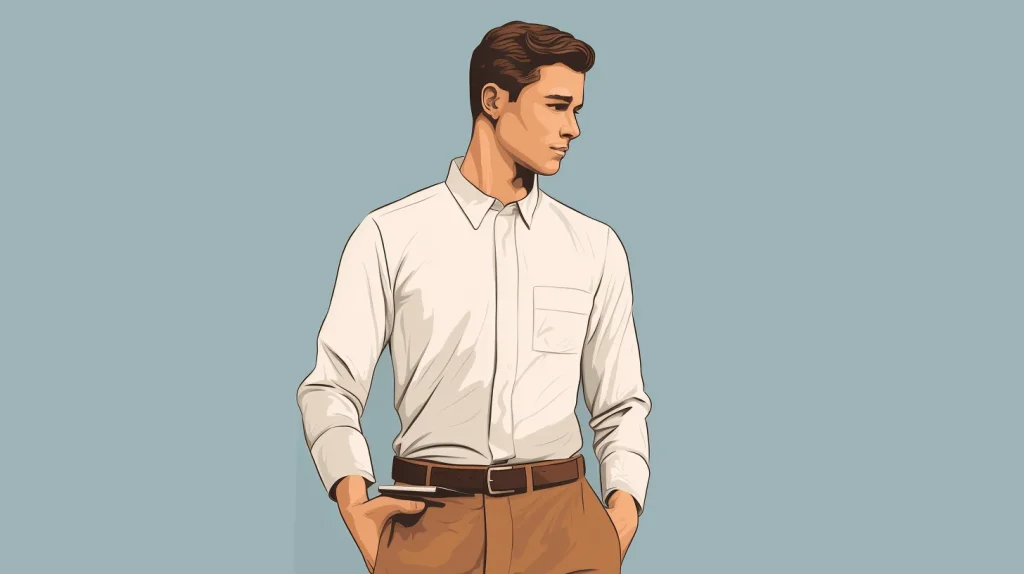
4. Russia: The Relaxed Comrades
Interestingly, in Russia, having hands in pockets, especially with one hand, is seen as relaxed or casual without necessarily being disrespectful. It’s like sipping tea at a cozy dacha.
So, dear traveler, the next time you go gallivanting around the globe, remember, your Hands In Pockets Body Language is like your passport—different rules apply depending on your destination. Stay savvy, pocket linguists! 🌍🤲💼
Body Language Combinations
Pop quiz! What’s the secret sauce to decoding the “hands in pockets body language”? Well, Sherlock, it’s combining clues. Your hands may be pocketed but what about those eyes, eyebrows, and those groovy legs?

Let’s investigate how combining hands in pockets with other body language signals can change the meaning faster than a chameleon changes colors.
The Potent Power of Pairing
Hands in pockets is like the base ingredient in the soup of body language. It’s essential but it doesn’t tell the full story. Pair it with a dash of this and a sprinkle of that, and voilà, the true flavor emerges!
- Facial Expressions: Picture this – hands in pockets, with a smile. That’s Captain Casual, relaxed and approachable. Now swap the smile with a frown, and we have Grumpy Gordon who’s disinterested.
- Body Posture: Stand tall with hands in pockets, and you’re a beacon of calm confidence. Slouch with hands tucked away, and the signal changes to low energy or insecurity. It’s like the difference between a majestic eagle and a soggy noodle.
- Foot Position: Hands in pockets and feet pointing towards someone? You’re engaged, locked on target! Feet pointing elsewhere? Your body is saying, “My hands are here, but my feet want to skedaddle.”
In The Spotlight: Examples
1. The Confident Maestro
Hands in pockets, but thumbs out and pointing to the crotch area. Pair that with a wide stance, chest out, and a smile, and you’ve got yourself the alpha, the Big Cheese.

2. The Nervous Nellie
Hands in pockets while fidgeting, coupled with downward gaze and hunched shoulders, screams nervousness. This is the human equivalent of a rabbit caught in headlights.
3. The Mixed Signal Sender
One hand in pocket, the other gesticulating, with an animated face and active eye contact. This person is a hybrid, casual but also engaged in the conversation. Like sipping a cocktail while discussing quantum physics.
So next time you see someone with their hands in pockets, don your detective hat. Look for the sidekicks – the facial expressions, body posture, and foot position. Each addition to the “hands in pockets body language” can alter the plot, so be prepared for twists and turns!
Remember, decoding body language is like piecing together a jigsaw puzzle, and the hands in pockets piece is just the corner of a much bigger picture. Keep your eyes peeled, and you’ll become a master of nonverbal cues in no time! 🕵️♂️🔍👐

Practical Tips and Applications
Alright, fellow body language aficionados, grab your magnifying glass and notebooks; it’s time to explore the wild, wonderful world of hands in pockets body language!
Let’s dive into when to rock this look, how to read others, and how to tweak your own vibe for maximum impact.
Hands in Pockets: A Go or No-Go?
Picture yourself sashaying into different settings, hands comfortably in pockets. Is it a hit or miss? Let’s figure out!
- Casual Hangouts: Thumbs up! When you’re with friends or at a casual gathering, this laid-back gesture screams, “I’m chill!” But do bring your hands out to wave at someone, or they’ll think you owe them money.
- Job Interviews: Enter at your own risk! In a professional setting, hands in pockets might be interpreted as lack of confidence. Keep your hands out and engage with a firm handshake. You’ll seal the deal faster than you can say “hands in pockets body language.”
- First Dates: Play it cool, but not too cool. Keep hands in pockets while maintaining an open posture and smiling. But when it’s time to engage, let those hands fly free to build rapport!
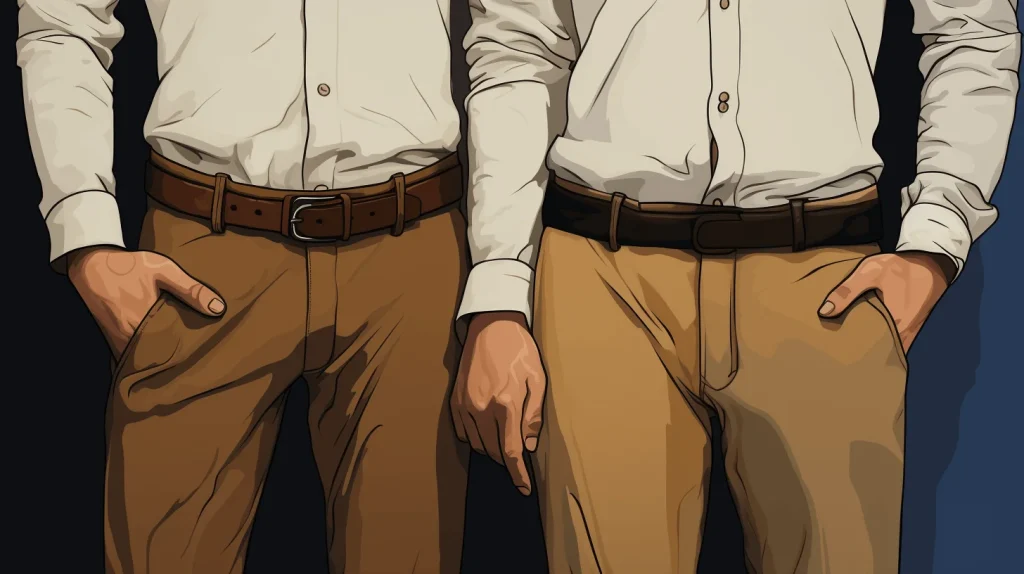
Crack the Code: Reading Others
Now, let’s don our Sherlock caps and learn to decode the mysteries of other people’s hands in pockets body language.
- Check for Consistency: If someone always has their hands in their pockets, they might just be comfortable that way. If it’s new, it could indicate a change in their feelings or thoughts.
- Observe Accompanying Signals: Are they smiling? Do their feet point towards you? These are all part of the hands in pockets body language bouquet.
- Context Matters: At a windy bus stop, hands in pockets might just mean it’s cold. In a heated discussion, it might mean they are closed off or defensive.
Be a Chameleon: Adapting Your Body Language
If you’re looking to dazzle with your nonverbal communication, here’s how to tweak that hands in pockets body language for optimal impact:
- Change it Up: Like an artist with a palette, mix and match. Use hands in pockets when you enter, but bring them out for emphasis or when things get more serious.
- Maintain Eye Contact: When your hands are cozy in your pockets, let your eyes do the talking. Good eye contact can convey confidence and interest.
- Mirror the Other Person: If they have their hands in their pockets, feel free to do the same. It creates a connection. If they change, change with them!
Remember, folks, hands in pockets body language is an art. Master it, and you can paint the Mona Lisa of interactions. Be attentive, adaptable, and most importantly, authentic! 🎨🤹👐
Female Body Language: Hands In Pockets Extravaganza
Ah, the mysterious, delicate, and complex tapestry that is female body language! Today, we unravel one thread of this grand tapestry – the art of “hands in pockets.”
No, ladies don’t do it just to look cool (though, granted, it often does) or because they are desperately trying to find that rogue lip balm.
There’s so much more to it, and it’s high time we decode this piece of nonverbal communication.

When Fashion Meets Function
Let’s get real, pockets in women’s clothing are like finding an oasis in a desert! When women find a dress with pockets, it’s a celebration 🎉. So, part of the “hands in pockets” ritual can be about relishing the pure, unadulterated joy of actually having pockets.
Setting the Stage: Context
Before we jump into the depths of pocketed hands, it’s crucial to understand the context in which our heroine is pocketing. Is she in a casual setting with friends? Or perhaps giving a presentation? Context is king, or in this case, queen.
Green Light: Confidence and Casual Coolness
Women with their hands casually tucked in their pockets often emanate an air of confidence. Like a modern-day Audrey Hepburn, the gesture says, “I am composed and in control.” It can be a power move to establish a laid-back yet authoritative aura.
Caution: Concealment or Discomfort
But hold your horses! Sometimes, when a woman’s hands take refuge in pockets, it can be a sign of nervousness or an attempt to hide something – whether it’s literal (like chipped nail polish) or metaphorical (like insecurities). The additional body language signs, such as shuffling feet or averting eye contact, can help in body language decoding.

Decoding the Allies: Posture and Expression
Remember, my dear Watson, hands don’t have pockets to themselves. A woman’s overall body posture and facial expressions are the trusty sidekicks of hands in pockets. Is she standing tall with a radiant smile? Or hunched with a grim expression? These nonverbal cues can paint a more comprehensive picture.
Pro Tips: Female Body Language Interpretation
- Look for clusters: Combine the hands in pockets with other body language clues.
- Context is queen: Where and when is she using this gesture?
- The thumb rule: If the thumbs are out, it often signals confidence.
Embracing the International Variations
Let’s not forget that culture can be a significant factor. In some cultures, hands in pockets can be seen as too casual or even disrespectful, while in others, it’s just part of the body language vocabulary.
So, consider the cultural nuances in your body language analysis.
Final Verdict from Body Language Experts
The “hands in pockets” gesture in female body language is akin to an onion – layers upon layers of meanings! Keep your eyes wide and your mind open. It’s an enthralling journey through the winding roads of nonverbal communication!
So, the next time you see a woman with her hands nestled in her pockets, channel your inner Sherlock Holmes and remember the golden nuggets you’ve discovered today.

And ladies, use this gesture with the wisdom and finesse of a maestro conducting an orchestra. Pockets await your symphony! 🎶👏
Hands In Pockets: Thumbs Out or In – The Ultimate Duel
Alright, folks! Put on your detective hats, because today we’re getting into the nitty-gritty of the “hands in pockets” world. You thought hands in pockets was all there is to it? Ha! A wild twist awaits – the age-old conundrum: thumbs out or thumbs in?
Let’s dive into the dazzling depths of this nonverbal communication goldmine.
👉The Swagger of Thumbs Out👈
You’ve seen it – that casual stance, hands in pockets but thumbs out, often hooked onto the pocket itself. It’s the James Dean of body language. This classic stance is often a way to say “Hey, I’m chill but I got this.”
A Little Peek into The Psychology Behind It:
- Confidence Galore: Thumbs are like the exclamation points of hand gestures. With thumbs out, you’re adding an extra dose of confidence to your hands in pockets body language.
- Territory Marker: According to body language experts, displaying thumbs can also be seen as subtly marking territory or showing dominance.
- Openness to Communication: Thumbs out can indicate that, although hands are in pockets, you are approachable and open to engaging.
👐 The Humble Poise of Thumbs In 👐
On the flip side, we have the thumbs nestled all snug with the rest of the hand. It’s like they’re all having a cozy gathering in the pocket.
The Underlying Vibes:
- Reserved or Nervous: When the thumbs decide to hibernate in the pocket, it can be a sign of a more reserved demeanor or nervousness. They’re saying, “I’ll just mind my own business.”
- Comfort Seeking: It can also be a self-soothing gesture. A way of keeping oneself composed in a setting that might not be as comfortable.
- Deep in Thought: This can be the pose of a thinker. A philosopher in deep rumination, contemplating the mysteries of the universe.
Top Hat Tips for Decoding Thumbs In or Out
- Contextual Tango: Always, and I mean always, consider the context. Is it a relaxed social setting or a high-stake business meeting?
- Companions Matter: What are the rest of the body language signals doing? Crossed legs, furrowed brows, or relaxed shoulders can give extra insights.
- Cultural Cues: Cultural differences play a big role in body language interpretation. In some cultures, hands in pockets might be frowned upon, no matter where the thumbs are.
The Showdown Conclusion 💥
So, thumbs in or out? Both have their moments of glory. Like seasoned actors, they take the stage in different scenes. The key is to observe, analyze, and listen to the silent whispers of these tiny giants in the world of nonverbal communication.
Whether you’re an observer or you’re thinking about how to place your own thumbs during your next social escapade, remember that these small appendages can speak volumes.
Thumb’s up to you for joining on this hands-in-pockets deep dive! 👍
The Catwalk Chronicles: Hands In Pockets When Walking
Hold on tight, for we’re about to sashay down the runway of life! Now, imagine you’re strolling down the street and notice the array of walking styles. Among the swarm of pedestrians, there’s that one individual, hands in pockets, effortlessly gliding along.
You wonder, “What is that hands in pockets when walking body language trying to say?” Well, let’s unravel this cozy mystery!
Comfort Chic: It’s All in The Jeans
When someone’s hands are in their pockets while walking, the first thing to consider is comfort. It’s like the hands are saying, “Ah! These pockets are like warm blankets in a cold world.”
In chilly weather, pockets are hands’ best friends. They may also be just enjoying the smooth fabric of their new jeans.
The Vibes:
- Relaxed and Unbothered: This nonchalant swagger screams ‘cool cucumber’ vibes. The person is probably in a good mood or at ease with their surroundings.
Don’t Play it by Ear: Listen to the Body
Don’t let those hands muffled in pockets deceive you! There’s more to hands in pockets body language than meets the eye. Body posture, the speed of walking, and facial expressions are the backup dancers supporting the lead hands-in-pockets move.
Crack the Code:
- Quick pace + hunched shoulders: This might signal that someone is anxious or in a hurry. Maybe they left the stove on?
- Slow pace + upright posture: They’re probably relishing the walk, having a Zen moment with nature.
- Restless scanning + clenched jaw: Be Sherlock Holmes and deduce that something is amiss.
The Confidence Strut: Owning the Sidewalk
The hands in pockets body language while walking can sometimes be a sign of confidence. They’re casually ruling their concrete jungle. The thumbs might be out, giving that extra edge of dominance.
Decode it:
- Chin up, steady gaze: They know where they’re going and don’t you dare question it!
Tips to Rock the Hands-in-Pockets Strut
- Balance it Out: Too much hands-in-pockets action can send mixed signals. Mix up your walking style; let those hands swing free occasionally.
- Watch the Context: In a formal setting or meeting, hands in pockets might come across as too casual.
- Mind the Culture: In some cultures, it might be considered impolite. Do a little research if you’re in a different country.
And… Cut!
So, my fellow runway walkers of everyday life, the hands in pockets when walking is a versatile, multi-layered act in the grand theatre of nonverbal communication. It’s not just a gesture; it’s an art form.
Remember, body language is like a silent movie; each move contributes to the story. So, as you walk down the boulevards and alleys, be aware of the subtle body signals that paint the canvas of human interaction. Keep strutting, and don’t forget – pockets can talk! 🚶♀️🚶👀
The Introverted Pocketeer: A Tale of Hands In Pockets, Head Down
Ah, the classic hands in pockets, head down walk! A common sight on streets, but have you ever wondered what’s going on behind the curtain of this hands in pockets body language?
Embracing the Cocoon
When you see someone wandering about, hands snugly in pockets and head bowed down, it’s like they’re in a cozy cocoon of their own. This body posture is often a signal of introversion or shyness. It’s like their body is saying, “Hey, I’m comfortable in my little bubble.”
Body Language Psychology 101:
- Protection: According to body language experts, this posture is like a protective shield. The person might be safeguarding themselves from the external environment or a not-so-pleasant inner monologue.
Puzzle Pieces: The Unspoken Dialogue
This hands in pockets, head down ensemble could be a silent conversation, where the body signals are the sentences.
Nonverbal Cues:
- Furrowed Brows: If they’ve got a scowl to match, they might be deep in thought or troubled by something.
- Quick Steps: Couple the head-down with a brisk pace, and they might be avoiding interaction or in a hurry.
- Slumped Shoulders: This could indicate a lack of confidence or feeling dejected.
The Actor’s Role: Context is Key!
You’re now an actor on the stage of life, and context is your script. The meaning behind hands in pockets, head down can change based on where the curtain rises.
Scene Analysis:
- At a party: They might be uncomfortable or anxious in social settings.
- Walking in the rain without an umbrella: Maybe they’re just trying to shield themselves from the raindrops keep falling on their head.
- In an art gallery: They could be intently analyzing an artwork, lost in the strokes of genius.
Pro Tips: When You’re the One with Hands in Pockets
- Be Mindful: Remember that your body language communicates messages, even when you’re silent.
- Chin Up: Literally, lift your head up occasionally. You never know what opportunities or smiles you might miss with your head down.
- Pocket Variety: Mix it up! Try one hand in the pocket; you might find it makes you seem more approachable.
Walking the Walk
So, the next time you see someone (or find yourself) meandering with hands in pockets and head down, remember, there’s a symphony of nonverbal communication playing out. Who knew that hands could be such chatterboxes?
Expert Says
Professional Problem Solver and Relationship Expert | Author, “Toxic Person Proof: Clear the Confusion and Learn to Trust Yourself“

In the end, this humble gesture is but a note in the beautiful, complex concerto of body language. Whether you’re a maestro or a novice, understanding these subtle body language cues can make you a more empathetic and savvy conductor in the orchestra of human interactions. 🎶👐
The Smooth Operator: Hand In Pocket Talking To A Girl While Leaning Against A Wall
Strikes a pose and leans against a wall with one hand in pocket. Hey, you’ve seen this in movies, haven’t you?” When a guy is smoothly chatting up a girl, leaning against a wall with a hand in his pocket, it’s like he’s effortlessly painting a picture with hands in pockets body language.
The Magnetic Lean
It’s no secret that a lean against the wall is a magnetic body posture. It’s like the wall is the canvas and the guy is the paintbrush! But when a hand casually slips into the pocket, that’s when the real art of nonverbal communication begins.
Nonverbal Cues 101:
- Confidence: The one hand in pocket while leaning displays a sense of casual confidence. He’s using the wall for support but doesn’t really need it. It’s like his own personal cheering section.
- Relaxed Approach: With one hand in pocket, he’s saying “I’m cool, calm, and collected.” Like a cucumber wearing sunglasses.
Decoding the Signals
Now, let’s put on our detective hats and dissect this scenario even further.
The Hand Gesture Chronicles:
- Thumb Out of the Pocket: This can be a subtle power move. The thumb is like a miniature superhero, showing dominance without being too showy.
- Fiddling with Objects in the Pocket: This could be a sign of nervousness. Maybe he’s trying to find his car keys to make a quick getaway if things go south!
The Wall Whisperer:
- Slight Lean: If he’s barely touching the wall, it might mean he’s ready to spring into action or leave the conversation at a moment’s notice.
- Full Lean: This signals he’s in it for the long haul. He’s practically become one with the wall; they’re best buddies now.
Expert Says
Antoinette Bonafede, LMSW, DBT, REBT
Senior Associate Therapist, Gateway to Solutions

Tips to Perfect the Move
If you ever find yourself as the star of this hands in pockets body language scene, here are some tips to make sure you’re painting a masterpiece:
- Keep It Natural: Don’t lean like you’re trying to hold up the building. Be casual. The wall appreciates subtlety.
- The Smile: Pair the pose with a genuine smile. It’s like adding a cherry on top of an already delicious sundae.
- Engage with Both: Don’t forget the other hand! Use it to animate your conversation. A bit of expressiveness never hurt anyone!
Wrapping It Up with Style
So, the next time you witness this classic “hand in pocket talking to a girl while leaning against a wall” pose, or you’re starring in your own real-life rom-com, remember it’s an art form in the world of hands in pockets body language. Be smooth, be confident, but most importantly, be genuine. The wall is your canvas, but sincerity is the color that truly brings the painting to life. 🖌️🎨
What does it mean when someone has their hands in their pockets?
Having their hands in their pockets can indicate various emotions and attitudes. It may suggest that the person is feeling reserved, defensive, or anxious. However, it’s essential to consider other body language cues and the context to interpret it accurately.
Is the body language of having hands in pockets the same for everyone?
No, the meaning of hands in pockets body language can vary from person to person. Some people may put their hands in their pockets as a habit or simply because they are cold, while for others, it might be a sign of discomfort or defensiveness. Context and individual differences play a significant role in interpretation.
Can having hands in pockets be a sign of confidence?
Yes, in some cases, having hands in pockets can signify confidence, especially when it’s done in a relaxed and casual manner. It can indicate that the person feels comfortable in their surroundings and doesn’t need to use their hands actively for communication.
How can I tell if someone is hiding something when they have their hands in their pockets?
When someone has their hands in their pockets and is hiding something, they may exhibit additional signs of discomfort or nervousness. Look for cues like avoiding eye contact, shifting weight from foot to foot, or using other barriers like crossed arms. These combined signals can suggest that they are concealing something.
Are there cultural differences in the interpretation of hands in pockets body language?
Yes, cultural norms and interpretations of body language can vary widely. In some cultures, putting hands in pockets may be seen as a sign of disrespect or indifference, while in others, it may be considered perfectly normal. Be mindful of cultural differences when analyzing this gesture.
Can having hands in pockets be a sign of relaxation?
Certainly, having hands in pockets can indicate relaxation, especially when it’s accompanied by a comfortable posture and a casual demeanor. It suggests that the person is at ease and not feeling threatened or anxious.
Does the position of the hands in pockets matter in body language?
Yes, the position of the hands within the pockets can convey different meanings. For example, having one hand in a pocket while the other is free may indicate a more relaxed stance, whereas both hands deep in the pockets may suggest a desire to withdraw or protect oneself.
What are the potential reasons for someone to put their hands in their pockets?
People put their hands in pockets for various reasons, including keeping warm, feeling comfortable, or simply out of habit. It can also be a way to express boredom, nervousness, or a desire to appear nonchalant. Understanding the context is crucial for accurate interpretation.
Can having hands in pockets be a sign of deception?
While it’s not a direct indicator of deception, having hands in pockets can be associated with nervousness or discomfort, which might be linked to deceptive behavior. It’s essential to consider other verbal and non-verbal cues when assessing deception.
How does gender influence the meaning of hands in pockets body language?
Gender can play a role in the interpretation of this body language. In some cultures, men putting their hands in their pockets might be seen as a sign of confidence or casualness, while women doing the same might be perceived differently. Gender expectations and norms can influence how this gesture is perceived.
Are there age-related differences in the use of hands in pockets body language?
Yes, age can affect the interpretation of this gesture. Younger individuals may use it to appear relaxed or cool, while older individuals might do so for comfort or warmth. The meaning can evolve with age and generational trends.
Can having hands in pockets affect first impressions in social or professional settings?
Yes, it can influence first impressions. Someone who stands with hands in pockets during an interview may come across as less engaged or confident. In social settings, it might be seen as a sign of aloofness. It’s important to be aware of how this gesture can impact initial perceptions.
What are the misconceptions about hands in pockets body language?
One common misconception is that having hands in pockets always signifies deception or dishonesty. In reality, it can have various interpretations, and context is key. Another misconception is that it’s universally negative; it can also convey relaxation or confidence.
Can having hands in pockets be a form of self-soothing?
Yes, putting hands in pockets can be a self-soothing mechanism. When a person is anxious or stressed, this gesture may help them feel more secure and in control. It’s one of many ways people comfort themselves unconsciously.
Are there any professional or career-related implications of using hands in pockets body language?
In professional settings, excessive use of hands in pockets may be seen as unprofessional or disinterested. It’s advisable to be mindful of your body language, as it can impact how others perceive your professionalism and engagement in work-related situations.
Conclusion
Pocketing the Essentials
Phew! That was a hands-in-pockets whirlwind! 🌪️ Before your brains get too cozy with all that information, let’s do a snappy recap of the hands in pockets body language saga. Remember, keeping your hands in pockets can convey a multitude of messages – from being casual and cool like the Fonz, to appearing a bit guarded or reserved. Context, my friends, is everything. Different cultures have varying takes, and other nonverbal cues like facial expressions, posture, and foot position can alter the meaning too. 🌍💃
The World is Your Nonverbal Oyster!
Now, I know what you’re thinking: “How do I become a hands-in-pockets Jedi?” Keep your eyes wide open, dear Watsons. The world is teeming with body language clues waiting to be deciphered. Keep observing, adapting, and experimenting. Who knows? You might just crack the body language Enigma Code one day. Stay curious and embrace the learning! 🕵️♂️📚
Your Turn to Rock the Stage!
Alright, all you body language aficionados, it’s time for a drumroll! 🥁 I hereby officially declare the comments section as the “Hands in Pockets Body Language Hall of Fame.” Share your fantastic experiences, titillating insights, or maybe that time you saw someone juggle while their hands were in their pockets! (Wait, what? 🤹♂️)
Pour your hearts out, and let’s create an encyclopedia of hands-in-pockets wisdom, right here in the comments! The keyboard is mightier than the sword, so let’s start typing! 🚀🎩💼🧡
FAQ: Hands In Pockets Body Language – Cracking the Code 🎩
Is keeping my hands in pockets always a bad thing?
Not at all, my pocket-dwelling friends! There’s no universal thumbs up or thumbs down for this gesture. The context, surrounding nonverbal cues, and cultural interpretations all play their part in the great play that is “Hands In Pockets Body Language”. Just remember that moderation and awareness of context are key!
Does the “hands in pockets” pose make me look more casual?
It can, indeed! Pockets can be your trusty steeds in the gallant quest to achieve that casual, laid-back look. But beware, young squire, as it can also be interpreted as lackadaisical or unprofessional in certain settings like a job interview or a royal banquet with the Queen.
How do I interpret if someone’s hands in pockets indicate nervousness?
Aha! Time to put on your body language detective hat! 🕵️♀️ Look for the accomplices of nervousness – perhaps a stiff posture, fidgety feet, or eyes scanning for an escape route. When hands in pockets join forces with these other nonverbal cues, you might have just cracked the case of the Nervous Nellie.
Can I become a body language expert solely by observing hands in pockets?
That’s like trying to bake a cake with just flour! Hands in pockets is just one ingredient in the grand recipe of body language. Mix in some posture analysis, facial expression decoding, and gesture interpretation, and voilà! You’re on your way to becoming a body language masterchef. 🎂
Are there any notable figures who are known for their hands in pockets body language?
Absolutely! From James Dean to President Barack Obama, history is teeming with iconic figures whose hands have ventured into the pocket realm. Sometimes, it’s for style, sometimes it’s for comfort, and other times, it might be a tactical move in the chess game of public perception.
References (For the Knowledge Hungry) 📚
- Pease, Allan & Barbara Pease. The Definitive Book of Body Language. Bantam, 2006.
- Navarro, Joe. What Every BODY is Saying: An Ex-FBI Agent’s Guide to Speed-Reading People. William Morrow Paperbacks, 2008.
- Knapp, Mark L., & Judith A. Hall. Nonverbal Communication in Human Interaction. Wadsworth, 2013.
There you have it, dear reader! You’re now equipped with knowledge and pocketfuls of wisdom. Keep your eyes peeled, and may your hands navigate the pockets of the world with grace and understanding! 🌍✨
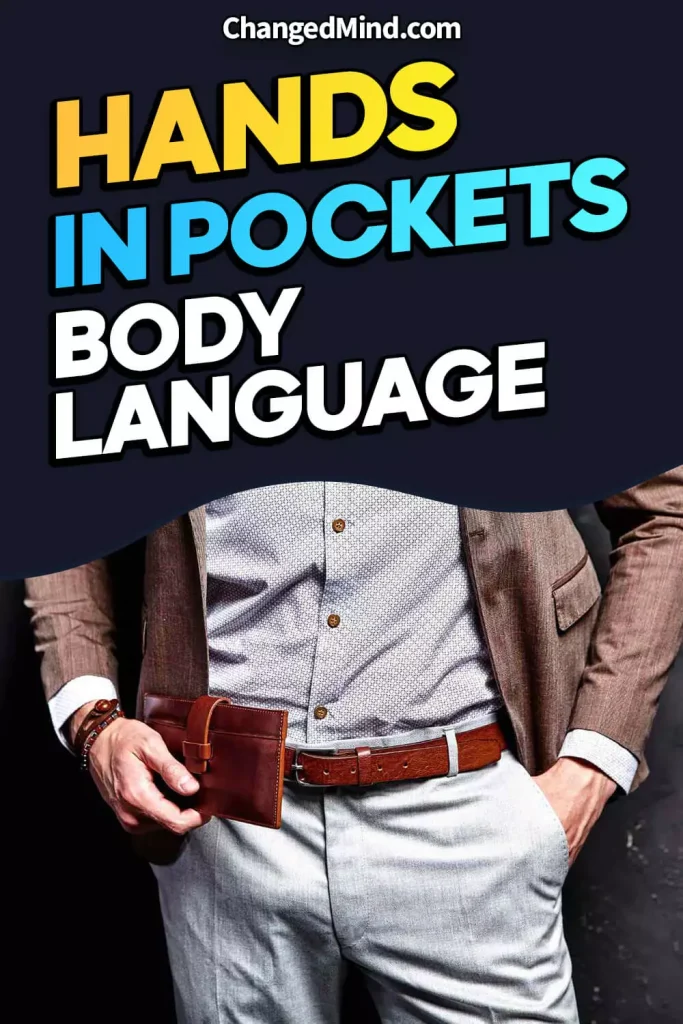
Disclaimer
This information is for educational purposes only and is not intended to be a substitute for clinical care. Please consult a health care provider for guidance specific to your case.

